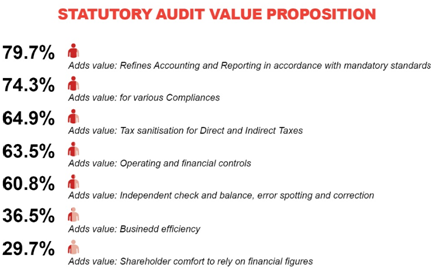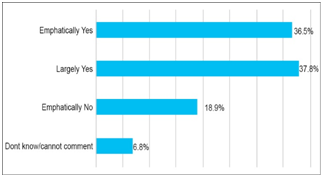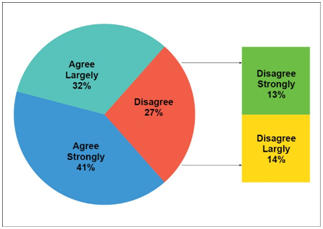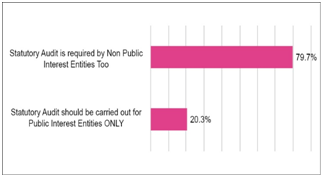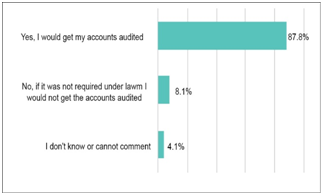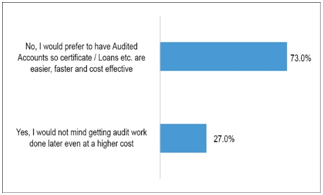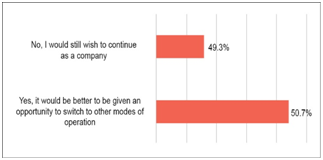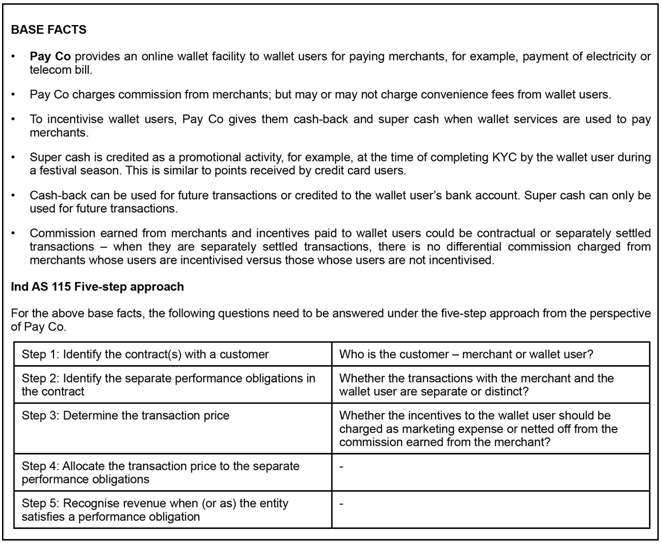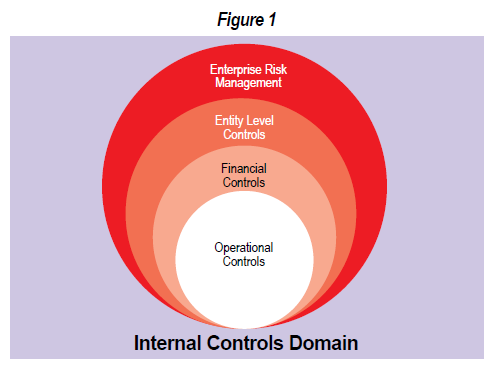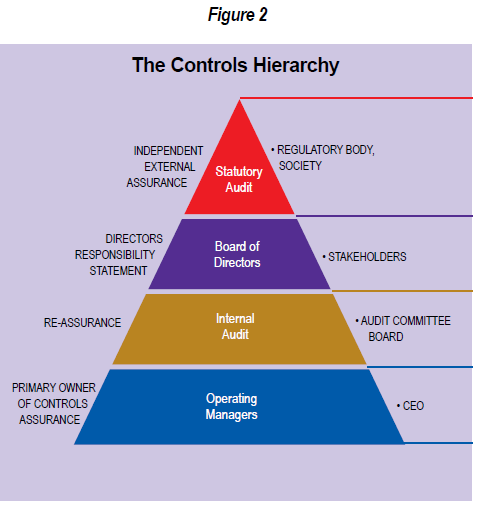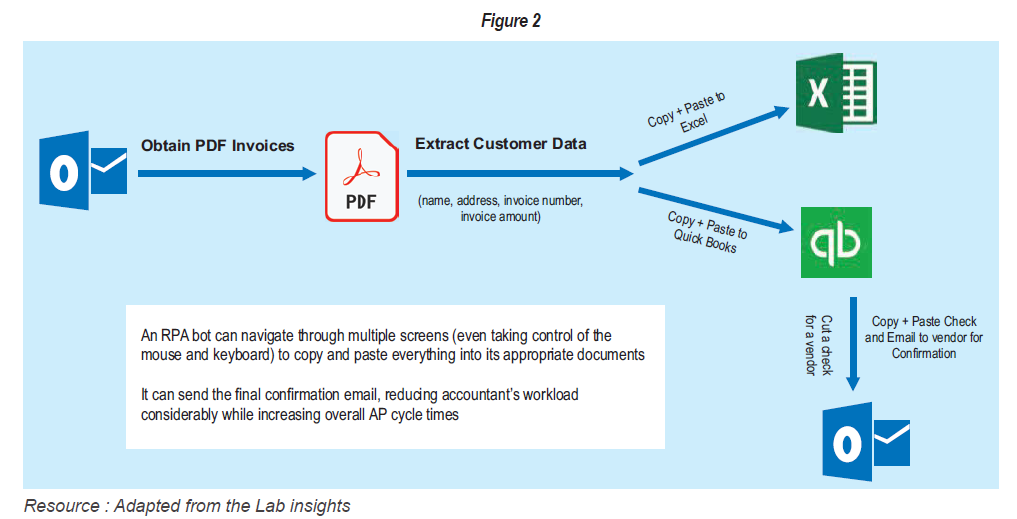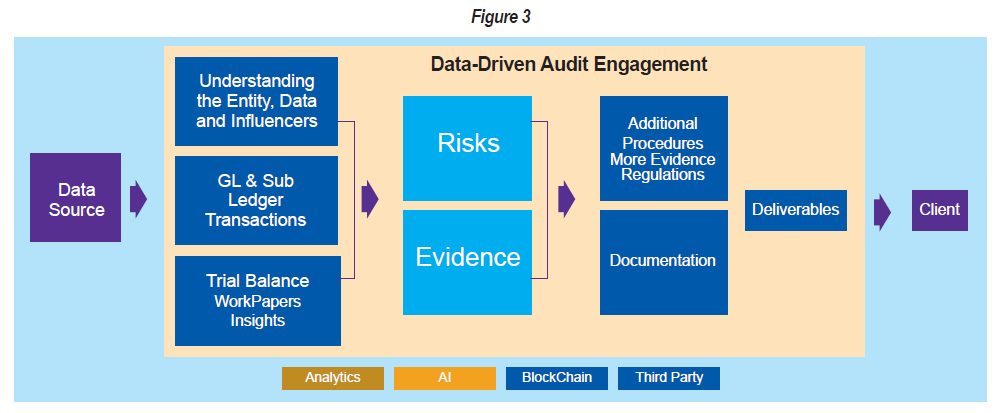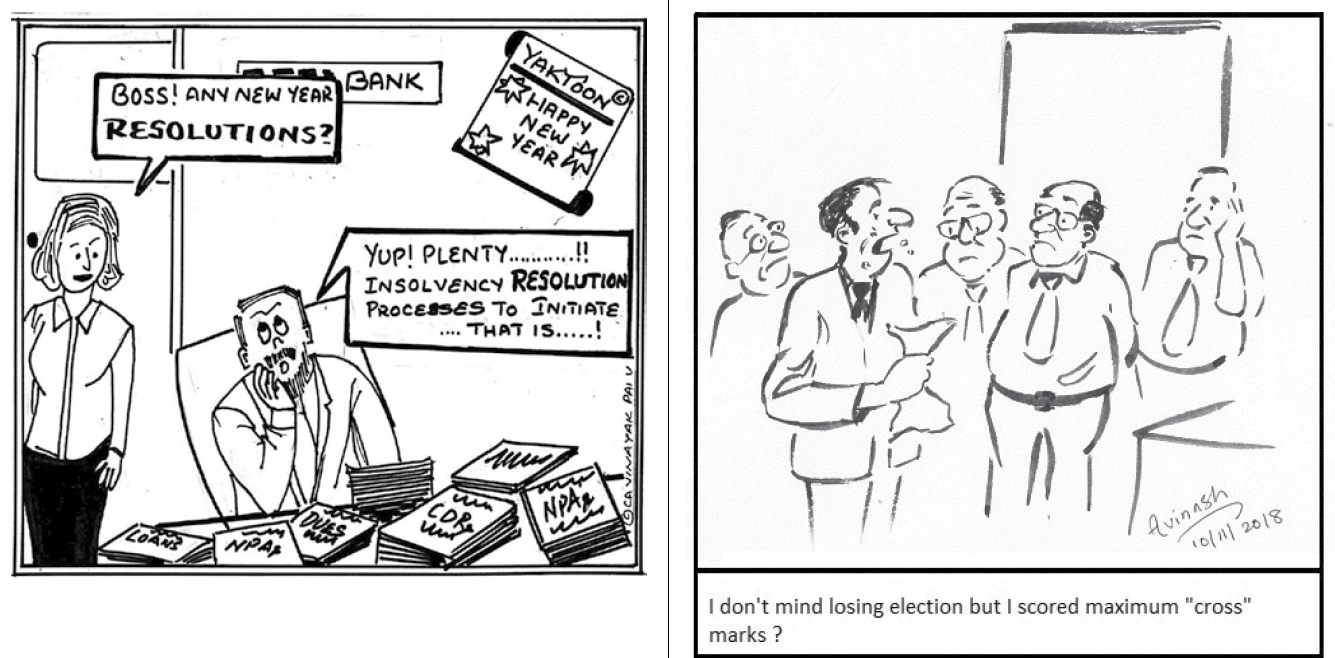It is always dissatisfaction with the status quo that drives
change, and the quantum of change is often proportionate to the magnitude of
dissatisfaction. So it was with the auditor’s report that auditors the world
over had been issuing with consistency. When the powerful investor-lender
lobby, who are the prime stakeholders in corporate enterprises, and therefore
the most crucial users of auditor’s reports, said that “the auditor’s opinion
on the financial statements is valued, but that the report could be more
informative”, they were making a polite understatement. In reality, they were
pretty upset about the fact that auditors were not telling them very much about
the most important matters they dealt with during the audit, how they responded
to them, and how they had concluded on them in forming their opinion. They were
unhappy that the entire process of audit was rather opaque and mysterious and
sought greater transparency. Their dissatisfaction got exacerbated each time
one more large corporation went under and they lost money.
Standard setters across the world were under acute pressure from this
powerful lobby, supported by regulators, to change the situation. That was the
genesis of the effort to revise reporting standards by the two leading standard
setters in the world: the IAASB1 and the PCAOB. In the meanwhile, an
initiative for change was taken independently by the UK as early as in 2012-13
followed closely by the Netherlands, both countries bringing out revised
reporting standards by 2014. When the IAASB announced 2016 as the effective date
for its revised ISAs, there were several countries that early-adopted them,
including Germany, Switzerland, Hong Kong, South Africa, New Zealand and
Poland. In fact, Zimbabwe conducted a “dry run” of the revised reporting
standards a full year ahead of the IAASB effective date. The PCAOB in the US
started its effort even earlier, in 2008. The new proposed standard was exposed
for outreach of various stakeholders several times, comments were invited and
examined, roundtables were held and finally, in 2016, a reproposed standard was
announced with staggered effective dates2. India framed its revised
reporting standards, based almost wholly on ISAs, with 2017 as the effective
date. But that date was later revised to accounting periods beginning 1st
April, 2018.
___________________________________________________
1 IAASB or
International Auditing & Assurance Standards Board is a constituent of the
International Federation of Accountants. The PCAOB or Public Companies
Accounting Oversight Board is the audit oversight body created under the
Securities & Exchange Commission of the United States.
The auditor’s report of a large enterprise is the “finished product”
signed and delivered after months of sustained efforts put in by a large number
of audit professionals and partners in planning and performing an audit. It
addresses the final outcome of that process for users of financial statements.
Yet, over the years, the auditor’s report largely became so standardised (or
“boilerplate”) that there was no significant difference to be seen between the
auditor’s report of one enterprise as compared to that of another, particularly
where the opinion was “clean”, even though the two entities’ businesses and
economic situations would be completely different. Users of audited financial
statements wanted to see more distinctiveness in the auditor’s report so that
each such report told its own story and had its own character. To achieve this,
the standard setters introduced the concept of disclosing Key Audit Matters
(KAMs) in the auditor’s report.
INTENDED
BENEFITS
Communicating KAMs3 in
the auditor’s report does not change the auditor’s responsibilities in any way.
Nor does it change the responsibilities of either the management or those
charged with governance (TCWG). Rather, it is intended to highlight matters of
the most significance in the audit that was performed “through the eyes of the
auditor”. KAMs may also be perceived by users to enhance audit quality, and
improve the confidence that they have in the audit and the related financial
statements. The communication of KAMs could help to alleviate the information
asymmetry that exists between company managements and investors, which could
result in more efficient capital allocation and could even lower the average
cost of capital.
Throughout the standard-setting
process, both by IAASB and by PCAOB, the multitude of stakeholders who
responded, ranging from investors, lenders, regulators, oversight authorities,
national standard setters, preparers of financial statements and accounting
firms have expressed their support to the introduction of KAMs in auditors’
reports of listed entities and felt that it would protect the interests of
investors and further the public interest in the preparation of informative,
accurate and independent auditors’ reports.
2 For large
accelerated filers FYs ending on or after 30/6/2019; Others – 15/12/2020
3 Under
the related PCAOB Standard, KAMs are called Critical Audit Matters (CAMs). An
effort has been made to give key comparative positions under the
related PCAOB standard in the footnotes, for the general appreciation of the
reader.
It is believed that having KAMs in the auditor’s report will:
- Focus users of the financial statements on
areas of financial statements that are subject to significant risks,
consequence and judgement
- Provide users with a basis to further engage
with managements and TCWG
- Enhance communications between the auditor
and TCWG on the most significant matters in the audit
- Increase the attention given by both,
managements and auditors, to disclosures in the financial statements,
particularly for the most significant matters
- Renew the auditor’s focus on matters to be
communicated, indirectly resulting in an increase in professional scepticism
and improvement in audit quality.
CHANGES MADE IN
STANDARDS
Apart from the introduction of the concept of communicating KAMs
contained in a new Standard, SA 701 Communicating Key Audit Matters in the
Independent Auditor’s Report, some other changes have also been made,
mainly in SA 260(R) Communication with Those Charged With Governance; SA
570(R) Going Concern; SA 700(R) Forming an Opinion and Reporting on
Financial Statements; SA 705(R) Modifications to the Opinion in the
Independent Auditor’s Report; SA 706(R) Emphasis of Matter Paragraphs
and Other Matter Paragraphs in the Independent Auditor’s Report; and SA
720(R) The Auditor’s Responsibilities Related to Other Information.
Besides this, consequential amendments have also been made to SAs 210, 220,
230, 510, 540, 600 and 710.
WHAT IS A KEY
AUDIT MATTER?
KAM is defined in the Standard as: Those matters that, in the
auditor’s professional judgement, were of most significance in the audit of the
financial statements of the current period. Key audit matters are selected from
matters communicated with those charged with governance.4
_______________________________________
4 A
CAM under the PCAOB Standard, on the other hand, is any matter arising from the
audit of the FS that was communicated or required to be communicated to the
audit committee and that (1) relates to accounts or disclosures that are
material to the FS, and (2) involved especially challenging, subjective, or complex
auditor judgement. CAMs are not a substitute for the auditor’s departure from
an unqualified opinion.
Perhaps the most challenging part of disclosing KAMs is how to determine
the matters that constitute KAMs. The Standard has struck a delicate balance
between prescription and auditor judgement over here. The definition itself
clearly states that the matters to be disclosed should be those that “in the
auditor’s professional judgement” were of the most significance. It then
requires that such matters should be selected by the auditor “from matters
communicated with TCWG”. Apart from this, it also underlines three areas that
are the most likely sources of matters that would be discussed with TCWG, among
others.
Several auditing standards specify matters that the auditor should take
up with TCWG, in addition to SA 260(R) Communication with Those Charged with
Governance, and 265 Communicating Deficiencies in Internal Control to Those
Charged with Governance. From these, the auditor first picks out matters
“that required significant auditor attention.” Then he applies his professional
judgement to further filter down matters and selects those that were “of the
most significance” in the audit of the current period as KAMs.
The auditor would
therefore be well advised to be armed with a ready-referencer checklist of
matters that the various standards prescribe for communication with TCWG to
first ensure that he complies with that requirement. It may be noted that there
is a subtle difference between SA 260 and SA 265 that is to be found in their
respective titles. Whereas SA 260 requires the auditor to communicate “with”
TCWG, SA 265 requires him to communicate “to” TCWG. To put it colloquially, SA
260 is two-way traffic (a discussion) but SA 265 is largely one-way traffic.
The definition of KAM talks about matters that were communicated “with” TCWG.
Significant deficiencies in internal control that are communicated to TCWG may
not always fall within the concept of KAM, although the auditor might have had
to modify his audit approach due to them, increasing his audit effort.
MATTERS TO BE
CONSIDERED BY THE AUDITOR IN DETERMINING KAMS5
The auditor is required to explicitly consider:
- Areas of higher assessed risks of material
misstatement, or significant risks.
- Significant auditor judgements relating to
areas of significant management judgement, including accounting estimates
having high estimation uncertainty.
- The effect of significant events or
transactions that occurred during the year.
______________________________________________
5 For
determining CAMs under the PCAOB Standard, the following points are provided:
(a) the auditor’s assessment of the risks of misstatement, including
significant risks; (b) the degree of auditor judgement related to areas in the
FS that involve the application of significant judgement or estimation by
management, including estimates with significant measurement uncertainty; (c)
the nature and timing of significant unusual transactions and the extent of audit
effort and judgement related to these transactions; (d) the degree of auditor
subjectivity in applying audit procedures to address the matter or in
evaluating the results of those procedures; (e) the nature and extent of audit
effort required to address the matter, including the extent of specialised
skill or knowledge needed or the nature of consultations outside the engagement
team regarding the matter; and (f) the nature of audit evidence obtained
regarding the matter.
This requirement articulates the thought process the auditor should go
through to consider these drivers of “areas of significant auditor attention”
while noting that KAMs are always selected from matters communicated to TCWG.
It should not, however, be assumed that KAMs could only result from a
consideration of these three specific indicators, nor that all the three
indicators must exist to determine KAMs. Furthermore, the standard requires the
auditor to filter down to “matters of most significance” from out of the “areas of significant auditor
attention”.
If one examines the three indicators mentioned above, one would see that
these are matters of most concern to the users of the audited financial
statements because any of them could turn out to be the cause of material
infirmity in the balance sheet of an entity or a source of management fraud.
Identification of matters drawn from them as KAM would enlighten users about
their nature, magnitude and how the auditor dealt with them. It would also
enable users, such as investors or analysts, to directly question the
management and TCWG about those matters.
The importance given in the Standard to matters discussed with TCWG has
a double purpose: (a) investors and lenders want to have insights into matters
taken up in interactions between the auditor and TCWG, including those that
were keeping the auditor up at nights, consistent with the audit committee’s
role representing the interest of shareholders; and (b) to stimulate discussion
between the auditor and TCWG that, it was perceived, was not happening as much
as it should. Obviously, matters that comprise communications with TCWG would
be matters that are material to the audit of the financial statements, and
selecting the ones that are of the most significance out of these would limit
KAMs to only crucial issues that were hitherto not getting disclosed in the
auditor’s report, and which investors and lenders wanted to focus on in
understanding the financial statements of companies they had put their money
into.
Significant
risks
To determine a risk as significant the auditor considers:
(a) Whether it is a fraud risk;
(b) Whether the risk relates to
major changes in developments that impact the entity or its business;
(c) Whether the risk arises from
complexity of transactions;
(d) Whether there are
significant related party transactions;
(e) Whether measurements of
amounts included in the financial statements involve a high level of
subjectivity or measurement uncertainty; and
(f) Whether the risk involves
significant events or transactions that are outside the normal course of
business of the entity, or appear to be unusual in nature.
Significant
judgements
The second point of consideration is significant auditor judgements
relating to areas of significant management judgement, including accounting
estimates having high estimation uncertainty. Accounting estimates involving
the outcome of litigation, fair value estimates for derivative financial
instruments that are not publicly traded, and fair value accounting estimates
for which a highly specialised entity-developed model is used, or for which
there are assumptions or inputs that cannot be observed in the marketplace,
generally involve a high level of estimation uncertainty. However, estimation
uncertainty may exist even where the valuation method and data are well
defined. Estimates involving judgements are generally made in the following
areas and often involve making assumptions about matters that are uncertain at
the time of estimation:
(a) Allowance for doubtful
accounts;
(b) Inventory obsolescence;
(c) Warranty obligations;
(d) Depreciation method used or
useful life of assets;
(e) Provision against carrying
amounts of investments;
(f) Outcome of long-term
contracts;
(g) Financial obligations or
costs arising from litigation;
(h) Complex financial
instruments that are not traded in an open market;
(i) Share-based payments;
(j) Property or equipment held
for disposal;
(k) Goodwill, intangible assets
or liabilities acquired in a business combination;
(l) Transactions involving non-monetary
exchange.
Estimates involving
judgements are likely to be susceptible to intentional or unintentional
management bias. This susceptibility increases with subjectivity and is often
difficult to detect at the individual account balance level. Intentional
management bias often foreshadows fraud.
Significant
events and transactions
The auditor would
need to exercise professional judgement to determine if a significant event or
transaction that he encounters in an audit poses a risk of material misstatement
or not, since such events or transactions could be of many assorted types. Some
such events are listed below:
(a) Operations in economically unstable regions,
volatile markets, or those subject to complex regulation;
(b) Cash flow crunch, non-availability of funds,
liquidity and going concern issues, or loss of customers;
(c) Changes in the industry where the entity
operates, or in the supply chain;
(d) Forays into new products, services, lines of
business, or new locations;
(e) Failed products, service
lines, ventures, business segments or entities;
(f) Complex alliances, joint
ventures, or significant transactions with related parties;
(g) Use of off-balance sheet
finance, special purpose entities, and other complex financial arrangements;
(h) Distress related to
personnel like non-availability of required skills, high attrition, frequent
changes in key executives;
(i) Unremediated internal
control weaknesses;
(j) Inconsistencies between
entity’s IT and business strategies, changes in IT environment, installation of
new IT systems and controls having a bearing on revenue recognition or
financial reporting;
(k) Inquiries into the entity’s
business by regulators or government bodies;
(l) Past misstatements, history
of errors, or significant period-end journal entries;
(m) Significant non-routine or
non-systematic transactions, including inter-company transactions, and large
revenue transactions at or near period-end;
(n) Transactions recorded based
on management intent, e.g. debt financing, intended sale of assets,
classification of marketable securities;
(o) Application of new
accounting pronouncements;
(p) Pending litigation and
contingent liabilities.
Matters to be
communicated with TCWG
SA 260, Communication with Those Charged With Governance,
includes many matters that should be communicated by the auditor. For the
purposes of KAMs reporting, however, all of those (e.g. the auditor’s
responsibility in relation to the audit; auditor independence) may not be
relevant. What would be relevant are communications of the significant risks
identified by the auditor and his significant findings.
Significant
risks
Communication with TCWG of significant risks (including fraud risks)
identified by the auditor helps them understand those matters, why they require
special audit consideration, and helps them in fulfilling their oversight
responsibility better. However, care should be taken when discussing the
planned scope and timing of the audit procedures so as to not compromise the
effectiveness of the audit, especially when some or all of TCWG are also part
of management. Such communication may include:
(a) How the auditor plans to
address the risks;
(b) The auditor’s approach to
internal control;
(c) The application of the
concept of materiality;
(d) The nature and extent of
specialised skills or knowledge needed to perform the audit, including the use
of auditor’s experts;
(e) The auditor’s preliminary
views about matters that are likely to be KAMs;
(f) Interaction and working
together with the entity’s internal audit function.
On his part, the auditor also benefits from a discussion with TCWG by
understanding:
(a) The appropriate persons
within TCWG with whom to communicate;
(b) The allocation of
responsibility between management and TCWG;
(c) The entity’s objectives,
strategies and the related business risks;
(d) Matters that TCWG consider
warrant particular auditor attention and areas where they request him to
perform increased audit procedures;
(e) Significant communication
with regulators;
(f) Other matters that TCWG
consider may influence the audit;
(g) The attitudes, awareness and
actions of TCWG concerning (i) the importance of internal control and how they
oversee the effectiveness of internal control, and (ii) the detection and
possibility of fraud;
(h) The actions of TCWG in
response to changes taking place in the accounting, IT, legal, economic and
regulatory environment;
(i) Responses of TCWG to
previous communication with the auditor.
Significant
findings
These include:
(a) The auditor’s views about
qualitative aspects of the entity’s accounting practices such as the
appropriateness of accounting policies, determination of accounting estimates,
and adequacy of financial statement disclosures;
(b) Significant difficulties
encountered by the auditor during the audit;
(c) Significant matters arising
during the audit that were or are being discussed with management;
(d) Written representations that
the auditor desires;
(e) The form and content of the
auditor’s report (now also including matters that the auditor expects to
include as KAMs);
(f) Other significant matters
arising during the audit that the auditor feels are relevant to TCWG.
Other matters:
Beyond SA 260, there are several other standards that specifically
require the auditor’s communication with TCWG that have a bearing on KAMs
reporting:
(a) SA 240, pertaining to the
auditor’s responsibilities relating to fraud;
(b) SA 250, pertaining to
consideration of laws and regulations;
(c) SA 265, pertaining to
communicating internal control deficiencies;
(d) SA 450, pertaining to
evaluation of misstatements;
(e) SA 505, pertaining to
external confirmations;
(f) SA 510, pertaining to
initial audit engagements;
(g) SA 550, pertaining to
related parties;
(h) SA 560, pertaining to subsequent
events; and
(i) SA 570, pertaining to going
concern.
ORIGINAL
INFORMATION AND SENSITIVE MATTERS
During the
formation of the Standard, concerns were voiced that the auditor might provide
“original information” when reporting KAMs. Original information is any
information about the entity that has not otherwise been made publicly
available by the entity. The Standard has addressed this in paragraphs A35-A38
by emphasising that the auditor should take care not to provide any original
information in KAMs, but if it becomes necessary to do so, he should encourage
management to include new or additional disclosures in the financial statements
or elsewhere in the annual report so that it no longer remains original
information.
Similar apprehension was voiced with regard to the auditor disclosing
“sensitive matters” when reporting KAMs. Sensitive matters could be possible
illegal acts or possible fraud, significant deficiencies in internal control,
breaches of independence, complex tax strategies or disputes, problems with
management or TCWG, quality of risk management structures, regulatory
investigations, a contingent liability that did not meet the requirements for
disclosure, other litigation or commercial disputes, evaluation of identified
or uncorrected misstatements, etc. The Standard has addressed this in paragraph
14(b), with more detailed application guidance in paragraphs A53-A56, by
stating that in extremely rare circumstances, where the entity has not publicly
disclosed information about it, the auditor may determine that a matter should
not be communicated in the auditor’s report because the adverse consequences of
doing so would reasonably be expected to outweigh the public interest benefits
of such communication.
COMMUNICATING
KAMS
To introduce KAMs to the user, and to dispel the danger that
communication of KAMs might be misunderstood by some users to be a separate
opinion by the auditor on those specific matters, the Standard makes the
following introductory statements6:
- Key audit matters are those matters that,
in the auditor’s professional judgement, were of most significance in the audit
of the financial statements of the current period; and
- These matters were addressed in the context
of the audit of the financial statements as a whole, and in forming the
auditor’s opinion thereon, and the auditor does not provide a separate opinion
on these matters.
Each KAM should then describe (i) why the matter was considered to be
one of most significance in the audit, and was therefore determined to be a
KAM, and (ii) how the matter was addressed in the audit. It would be advisable
for the auditor to include in the description of a KAM a reference to a Note to
the Financial Statements where management has described the matter in detail
from its point of view7. And, if there is no such disclosure, he
should encourage management to include it. Doing so will also take care of the
danger of the auditor unwittingly providing any original information.
_________________________________________
6 The introductory statement
in case of CAMs under the PCAOB Standard is: The critical audit matters
communicated below are matters arising from the current period audit of the FS
that were communicated or required to be communicated to the audit committee
and that: (1) relate to accounts or disclosures that are material to the
financial statements and (2) involved our especially challenging, subjective,
or complex judgements. The communication of critical audit matters does not
alter in any way our opinion on the financial statements, taken as a whole, and
we are not, by communicating the critical audit matters below, providing
separate opinions on the critical audit matters or on the accounts or
disclosures to which they relate.
7 The
following needs to be done to communicate CAMs under the PCAOB Standard: (a)
identify the CAM; (b) describe the principal considerations that led the
auditor to determine that the matter is a CAM; (c) describe how the CAM was
addressed in the audit [in doing so, describe: (i) the auditor’s response or
approach that was most relevant to the matter; (ii) a brief overview of the audit procedures
performed; (iii) an indication of the outcome of the audit procedures; and (iv)
key observations with respect to the matter, or some combination of these
elements]; (d) refer to the relevant financial statement accounts or
disclosures that relate to the CAM.
To dispel any misunderstanding that may arise in the minds of users as
to the import of disclosing KAMs by the auditor, and to clearly make users
understand the significance of a KAM in the context of the audit, and the
relationship between KAMs and other elements of the report, it is necessary for
the auditor to use language that:
- Does not imply that the matter was not appropriately
resolved by the auditor in forming his opinion;
- Relates the matter directly to the
specific circumstances of the entity, while avoiding generic or standardised
language;
- Takes into account how the matter is
addressed in the related disclosures in the financial statements, if any; and
- Does not contain or imply discrete
opinions on separate elements of the financial statements.
The Standard intends that description of a KAM should be relatively
clear, concise, understandable, entity-specific and should not be viewed as
competing with the management’s disclosures or providing original information
about the entity. Also, that there should be a balance between the requirement
to explain why the auditor considered each matter to be of the most significance
in the audit and the flexibility allowed in describing its effect on the audit.
The Standard has left the nature and extent of the auditor’s response and
conclusion on the matter to his judgement by using the words “how the matter
was addressed in the audit”. Nevertheless, the Standard provides guidance that
the auditor may describe:
- Aspects of the auditor’s response or
approach that were most relevant to the matter or specific to the assessed risk
of material misstatement;
- A brief overview of procedures performed;
- An indication of the outcome of the
auditor’s procedures; or
- Key observations with respect to the
matter;
– or some combination of these elements.
While matters that give rise to a modified opinion that are reported
under SA 705(R) or going concern matters that are reported under SA 570(R) are,
by definition, KAMs, as they are already prominently mentioned elsewhere in the
auditor’s report, they are not required to be again described in detail under
the KAMs section. Only a reference may be made in the KAMs section to the
related Basis for Qualified/ Adverse Opinion, or the Material Uncertainty
Related to Going Concern sections of the auditor’s report.
Where the auditor determines, based on facts and circumstances of the entity
and the audit, that there is no KAM to be disclosed, he shall nevertheless
include a statement under the KAMs section that there is no KAM to communicate.
It is an expectation in the Standard that in every audit of a listed entity
there would be at least one matter that qualifies as KAM, and therefore the
auditor should be very circumspect in asserting that there is no KAM to report.
However, there could be situations where the auditor determines that a KAM,
though there, is not to be communicated (i) because law or regulation prohibits
such communication, (ii) that the matter belongs to the category of extremely
rare circumstances where the consequences of communication outweigh the public
interest benefits of communication, or (iii) that the only matters to be
communicated as KAMs are disclosed elsewhere in the report in the basis for
modified opinion or going concern sections.
SA 705.29, Considerations When the Auditor Disclaims an Opinion on
the Financial Statements states that when the auditor disclaims an opinion
on the financial statements, the auditor’s report shall not include a KAMs
section.
The auditor is required to communicate with TCWG (i) the matters that he
has determined to be KAMs, or (ii) that he has determined that there are no KAMs.
APPLICABILITY
The Standard is mandatorily applicable to listed entities8.
Yet, the Standard allows for voluntary application by the auditor to audits of
financial statements of other entities also. SA 700(R).A35-A38 deals with two
situations where KAMs may be communicated: (i) where law or regulations
requires such communication, and (ii) where the auditor decides to communicate
KAMs for unlisted entities, particularly in case of unlisted public interest
entities (PIEs). PIEs are large entities that have a large number and a wide
range of stakeholders, for example, banks, insurance companies, employee
benefit funds, charitable institutions, etc.
Even where law or regulation is silent, voluntary communication of KAMs
in the auditor’s report by auditors of PIEs is to be encouraged, given the fact
that most of them are very large in size, have many stakeholders, and deal with
huge amounts of public money and may often also have large government
shareholding.
The ICAI Implementation Guide to SA 701
pointedly mentions that: “The auditor’s report is a deliverable by the auditors
and hence the decision to communicate key audit matters is to be taken by
auditors only.” In cases of unlisted entities where the auditor would like to
keep his option open for communicating KAMs, ISA 210.A249 (2018
Handbook) Agreeing the Terms of Audit Engagements, states that the
engagement letter may make reference to “the requirement for the auditor to
communicate key audit matters in the auditor’s report in accordance with ISA
701.” This is also reiterated in SA 700.A37.
8 PCAOB Standards apply only to listed
entities and hence there is no ambiguity w.r.t. CAMs communication.
DOCUMENTATION
While the overarching requirements of SA 230, Documentation, of
documenting significant professional judgements made in reaching conclusions on
significant matters arising during the audit appropriately address the
documentation of significant judgements made in determining KAMs, SA 701
nevertheless includes specific documentation requirements in respect of the
following:
- Matters that required significant auditor
attention and the rationale for the auditor’s determination as to whether or
not each of these matters is a KAM;
- Where applicable, the rationale for the
auditor’s determination that there are no key audit matters to communicate in
the auditor’s report or that the only key audit matters to communicate are
those matters addressed by paragraph 1510 ;
- Where applicable, the rationale for the
auditor’s determination not to communicate in the auditor’s report a matter
determined to be a key audit matter.
This is so that a more specific documentation requirement 11 would
address the concerns of regulators and audit oversight authorities (like NFRA)
for their ability to appropriately inspect or enforce compliance with the
Standard.
ILLUSTRATIVE KAMs
A) Introductory paragraph
Key audit matters are those matters
that, in our professional judgement, were of most significance in our audit of
the financial statements of the current period. These matters were addressed in
the context of our audit of the financial statements as a whole, and in forming
our opinion thereon, and we do not provide a separate opinion on these matters.
9 The related Indian Standard
on Auditing, SA 210, has not been correspondingly revised by ICAI as of the
date of this article.
10 Matters given in the basis
for modified opinion or the going concern sections of the auditor’s report
11 The
corresponding documentation requirement for CAMs under the PCAOB Standard is:
For each matter arising from the audit of the financial statements that: (a)
was communicated or required to be communicated to the audit committee, and (b)
relates to accounts or disclosures that are material to the financial
statements; the auditor must document whether or not the matter was determined
to be a critical audit matter (i.e., involved especially challenging,
subjective, or complex auditor judgement) and the basis for such determination.
[Note: Consistent with the requirements of AS 1215, Audit Documentation, the
audit documentation should be in sufficient detail to enable an experienced
auditor, having no previous connection with the engagement, to understand the
determinations made to comply with the provisions of this Standard.]
B) Why the matter was considered to be one of
most significance in the audit and therefore determined to be a KAM?
Under Indian Accounting Standards (Ind AS), the Group is required to
annually test the amount of goodwill for impairment. This annual impairment
test was significant to our audit because the balance of XX as of March 31,
20X1 is material to the financial statements. In addition, management’s
assessment process is complex and highly judgemental and is based on
assumptions, specifically [describe certain assumptions], which are
affected by expected future market or economic conditions, particularly those
in [name of country or geographic area].
- Valuation of Financial Instruments
The Company’s investments in structured financial instruments represent
[x %] of the total amount of its financial instruments. Due to their
unique structure and terms, the valuations of these instruments are based on
entity-developed internal models and not on quoted prices in active markets.
Therefore, there is significant measurement uncertainty involved in this
valuation. As a result, the valuation of these instruments was significant to
our audit.
- Effects of New Accounting Standards
As of April 1, 20XX, Ind ASs 110 (Consolidated Financial Statements),
111 (Joint Arrangements) and 112 (Disclosure of Interests in Other Entities)
became effective. Ind AS 110 requires the Group to assess for all entities
whether it has: power over the investee, exposure or rights to variable returns
from its involvement with the investee, and the ability to use its power over
the investee to affect the amount of the investor’s returns. The complex
structure, servicing and ownership of each vessel requires the Group to assess
and interpret the substance of a significant number of contractual agreements.
- Valuation of Defined Benefit Pension
Assets and Liabilities
The Group has recognised a pension surplus of [monetary value] as
of March 31, 20X1. The assumptions that underpin the valuation of the defined
benefit pension assets and liabilities are important, and also subjective
judgements as the surplus/deficit balance is volatile and affects the Group’s
distributable reserves. Management has obtained advice from actuarial
specialists in order to calculate this surplus, and uncertainty arises as a
result of estimates made based on the Group’s expectations about long-term
trends and market conditions. As a result, the actual surplus or deficit
realised by the Group may be significantly different to that recognised on the
balance sheet since small changes to the assumptions used in the calculation
materially affect the valuation.
The amount of revenue and profit recognised in the year on the sale of [name
of product] and aftermarket services is dependent on the appropriate
assessment of whether or not each long-term aftermarket contract for services
is linked to or separate from the contract for sale of [name of product].
As the commercial arrangements can be complex, significant judgement is applied
in selecting the accounting basis in each case. In our view, revenue
recognition is significant to our audit as the Group might inappropriately
account for sales of [name of product] and long-term service agreements
as a single arrangement for accounting purposes and this would usually lead to
revenue and profit being recognised too early because the margin in the
long-term service agreement is usually higher than the margin in the [name
of product] sale agreement.
As disclosed in Note 2, the Group is subject to a number of regulatory
capital requirements, which are a key determinant of the Group’s ability to
continue as a going concern. We identified that the most significant assumption
in assessing the Group’s and [significant component’s] ability to
continue as a going concern was the expected future profitability of the [significant
component], as the key determinant of the forecasted capital position. The
calculations supporting the assessment require management to make highly
subjective judgements. The calculations are based on estimates of future
performance, and are fundamental to assessing the suitability of the basis
adopted for the preparation of the financial statements. We have therefore
spent significant audit effort, including the time of senior members of our
audit team, in assessing the appropriateness of this assumption.
C) How the matter was addressed in the audit?
Our audit procedures included, among others, using a valuation expert to
assist us in evaluating the assumptions and methodologies used by the Group, in
particular those relating to the forecasted revenue growth and profit margins
for [name of business line]. We also focused on the adequacy of the
Group’s disclosures about those assumptions to which the outcome of the
impairment test is most sensitive, that is, those that have the most
significant effect on the determination of the recoverable amount of goodwill.
Our audit procedures to address the risk of material misstatement
relating to revenue recognition, which was considered to be a significant risk,
included:
• Testing of controls, assisted
by our own IT specialists, including, among others, those over input of
individual advertising campaigns’ terms and pricing; comparison of those terms
and pricing data against the related overarching contracts with advertising
agencies; and linkage to viewer data; and
• Detailed analysis of revenue
and the timing of its recognition based on expectations derived from our
industry knowledge and external market data, following up variances from our
expectations.
We have involved our valuation, financial instruments and tax
specialists in addressing this matter and focused our work on:
• Assessing the
appropriateness of the fair values assigned to each element of the
consideration received by referring to third-party data as applicable;
• Evaluating management’s
assessment of embedded derivatives within the sale and purchase agreement; and
• Critically assessing the
fair value of [name of component] and the related allocation of the
purchase price to the assets and liabilities acquired by evaluating the key
assumptions used.
We also evaluated the presentation and disclosure of the transactions
within the consolidated financial statements.
- Restructuring Provision and
Organisational Changes
In our audit we addressed the appropriateness and timely recognition of
costs and provisions in accordance with Ind AS 37 – Provisions, Contingent
Liabilities and Contingent Assets. These recognition criteria are detailed and
depend upon local communication and country-specific labour circumstances.
Recognition criteria can be an agreement with the unions, a personal
notification or a settlement agreement. The component audit teams have
performed detailed audit procedures on the recognition and measurement of the
restructuring provisions related to their respective components. The Group
audit team has identified the completeness and accuracy of the restructuring
provisions as a significant risk in the audit, has reviewed the procedures
performed by the component audit teams and discussed with the component teams
the recognition criteria. The restructuring provisions at the head office were
audited by the Group audit team. We found the criteria and assumptions used by
management in the determination of the restructuring provisions recognised in
the financial statements to be appropriate.
Decision framework to guide the auditor in
exercising his professional judgement

- Restructuring Provision and Disposition
of a Mine
Our audit procedures included, among others: examining the
correspondence between the Group and the [name of government] and
discussing with management the status of negotiations; examining announcements
made by management to assess whether these currently commit the Group to
redundancy costs; analysing internal and third-party studies on the social
impact of closure and the related costs; recalculating the provision for
closure and rehabilitation costs for the mine in the context of the accelerated
closure plans; and reassessing long-term supply agreements for the existence of
any onerous contracts in the context of the Group’s revised requirements of the
accelerated closure plans. We assessed the potential risk of management bias
and the adequacy of the Group’s disclosures.
We found the assumptions and resulting estimates to be balanced and that
the Group’s disclosures appropriately describe the significant degree of
inherent imprecision in the estimates and the potential impact on future
periods of revisions to these estimates. We found no errors in calculations.
D) How the auditor may refer to the related
disclosures in the description of a KAM?
- Valuation of Financial Instruments
The Company’s disclosures about its structured financial instruments are
included in Note 5.
The Company’s disclosures about goodwill are included in Note 3, which
specifically explains that small changes in the key assumptions used could give
rise to an impairment of the goodwill balance in the future.











